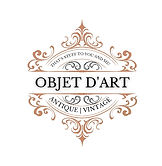Vintage greig & Douglas shortbread tin rare in this condition 20 cm round 4 cm height this lovely very decorative Scottish tin showing pictures of Edinburg castle I believe to be rare some age related wear
Shortbread is a Scottish treat with a long history that can be traced back to the 12th century:
Origins
Shortbread originated as a type of twice-baked biscuit, or "bread biscuit", made from leftover bread dough that was sweetened and baked. The word "biscuit" comes from Italian and means "twice cooked".
Refinement
The shortbread we know today is credited to bakers at the court of Mary, Queen of Scots in the 16th century. The queen and her people loved the refined recipe.
Name
The name "shortbread" comes from the short, crumbly texture of the cookie, which is achieved through the use of pure butter. The word "short" used to mean tender in reference to food.
Cost
Shortbread was expensive to make because it required high-quality butter, flour, and sugar. It was usually only served at special occasions like weddings, Christmas, Hogmanay, and christenings.
Triangular wedges
Triangular wedges of shortbread are known as "petticoat tails". This form of shortbread is associated with Mary, Queen of Scots.
New Year's tradition
In Scotland, it's traditional to give a box of shortbread to a homeowner as a good luck gift on New Year's Eve.
First printed recipe
The first printed recipe for shortbread was published in 1736 by a Scotswoman named Mrs McLintock.
Vintage greig & Douglas shortbread tin rare in this condition
Stock no
649


































